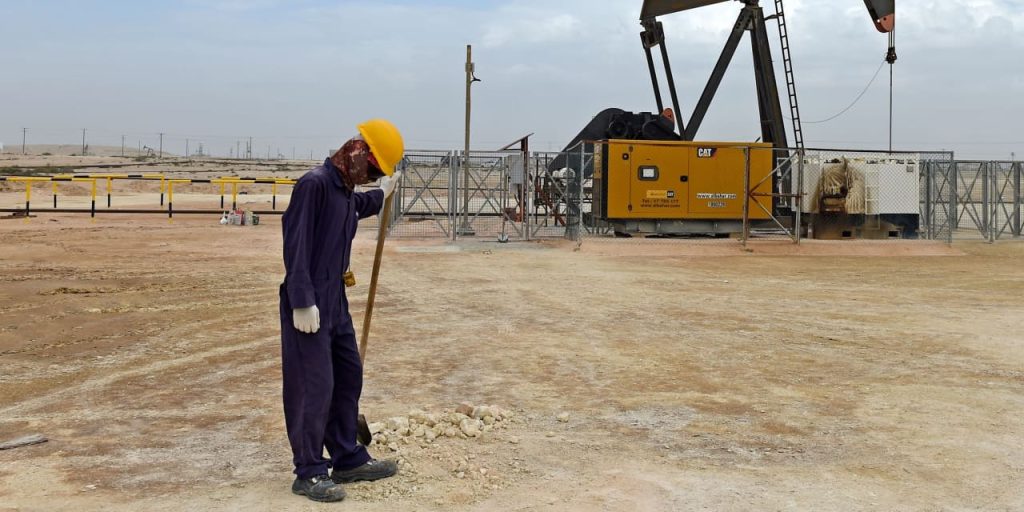Oil futures rose Friday, notching a weekly gain, as rising tensions in the Middle East stoke fears of a wider war that could crimp crude supplies.
Market drivers
-
West Texas Intermediate crude for February delivery
CL00,
+0.18% CL.1,
+0.18% CLG24,
+0.18%
rose $1.62, or 2.2%, to settle at $73.81 a barrel on the New York Mercantile Exchange, for a 3% weekly gain, FactSet data show. -
March Brent crude
BRN00,
+0.63% BRNH24,
+0.63% ,
the global benchmark, added $1.17, or 1.5%, to settle at $78.76 a barrel on ICE Futures Europe, for a weekly rise of 2.2%. -
February gasoline
RBG24,
+0.53%
shed 0.2% to $2.11 a gallon, ending less than 0.1% lower for the week, while February heating oil
HOG24,
-0.21%
gained 0.8% to $2.61 a gallon, for a weekly rise of nearly 3.2%. -
Natural gas for February delivery
NGG24,
-6.76%
settled at $2.89 per million British thermal units, up nearly 2.6% Friday to post a gain of 15.1% for the week.
Market drivers
Crude finished the first week of 2024 with a gain as the market came off a down year in 2023 that was dogged by worries over demand and a pickup in production by the U.S. and other producers as the Organization of the Petroleum Exporting Countries and its allies curbed output.
Attacks on ships in the Red Sea by Iran-backed Houthi rebels in Yemen have prompted fears of a wider conflict that could significantly curtail crude flows out of the Middle East.
“As a rapid de-escalation is hardly conceivable, we believe that oil prices should remain well supported,” Carsten Fritsch, commodity analyst at Commerzbank, said in a note.
So far, changes in shipping routes have led to increased demand for U.S. crude, pushing up exports.
See: Why Red Sea chaos is driving oil buyers ‘into the arms of U.S. shale producers’
“The increase in insurance premiums and the delays resulting from diversion of oil tankers are already priced in,” said Anas Alhajji, an independent energy expert and managing partner at Energy Outlook Advisors. “As long as Russian oil shipments going south in the Red Sea are not affected, there is no reason for oil prices to increase markedly.”
He told MarketWatch that the “worst-case scenario is not an attack on oil tankers” but an attack that leads to a major oil spill in the Bab el-Mandeb Strait that halts navigation completely. The sea route chokepoint connects the Red Sea to the Gulf of Aden and Arabian Sea.
The shutdown of Libya’s largest oil field by protesters this week has also provided support. Output at the field was seen at around 270,000 barrels a day.
Oil traders continue to eye data for hints on the outlook for energy demand.
Oil prices Friday initially fell before moving higher after U.S. data showed that the domestic economy pumped out 216,000 new jobs in the final month of 2023, topping Wall Street’s forecast of a 170,000 gain.
The strong U.S. nonfarm-payrolls report “suggests that oil is benefiting from signs of a stronger economy, easing concerns about the potential for weakening demand,” Colin Cieszynski, portfolio manager and chief market strategist at SIA Wealth Management, told MarketWatch.
Crude slumped Thursday after government data showed U.S. gasoline inventories climbed by 10.9 million barrels last week, while distillate stockpiles were up by 10.1 million barrels last week.
The data were “overwhelmingly bearish for refined products,” said Stephen Innes, managing partner at SPI Asset Management, in emailed commentary. “This development raises concerns about a potential disconnect between the market’s Goldilocks narrative and actual gasoline demand, especially when considering gasoline demand as a forward indicator of economic activity.”
Read the full article here




